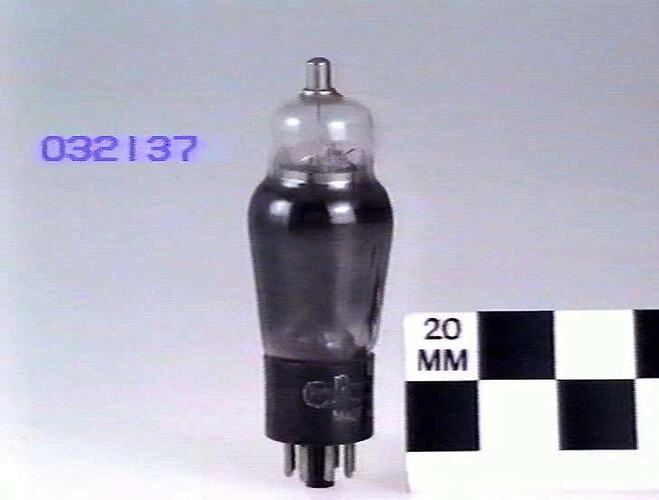Summary
Heptode (pentagrid) frequency changer used in radio receivers from the late 1930s to the early 1950s. The main application was in 'farm radios' powered by batteries for use in areas without reticulated electricity. 2 V directly heated cathode.
Farm radios looked like the normal mains operated console or mantel radios but were operated from batteries or the 32 volt DC supply that was quite common on farms. The earlier models frequently used a 2 volt accumulator for the valve filaments and three 45 volt 'B' batteries for the plate supply. Sometimes the 2 volt accumulator would be replaced by a 2 volt 'Air cell' battery, a carbon-zinc air-depolarized battery.
Later models used a single 6 volt accumulator and used a vibrator to obtain the high voltage for the valves. This eliminated the considerable cost of non-rechargeable batteries.
Manufacturer: AWV, Sydney Australia
Physical Description
Base type: octal No. of pins in base: 8 Bulb shape: shouldered Bulb material: glass Top cap:
More Information
-
Collection Names
-
Collecting Areas
-
Acquisition Information
Donation from I. C. Paterson, 15 Dec 1980
-
Manufacturer
Australian Wireless Valve Co (AWV Co), Sydney, New South Wales, Australia, 1936-1952
-
Inscriptions
Bulb: (none) Base: (hand written) 1C7G / Raditron / MADE IN AUSTRALIA / (excise mark) 1(over)4
-
Brand Names
-
Classification
-
Category
-
Discipline
-
Type of item
-
Overall Dimensions
115 mm (Length), 39 mm (Outside Diameter)
-
Keywords
